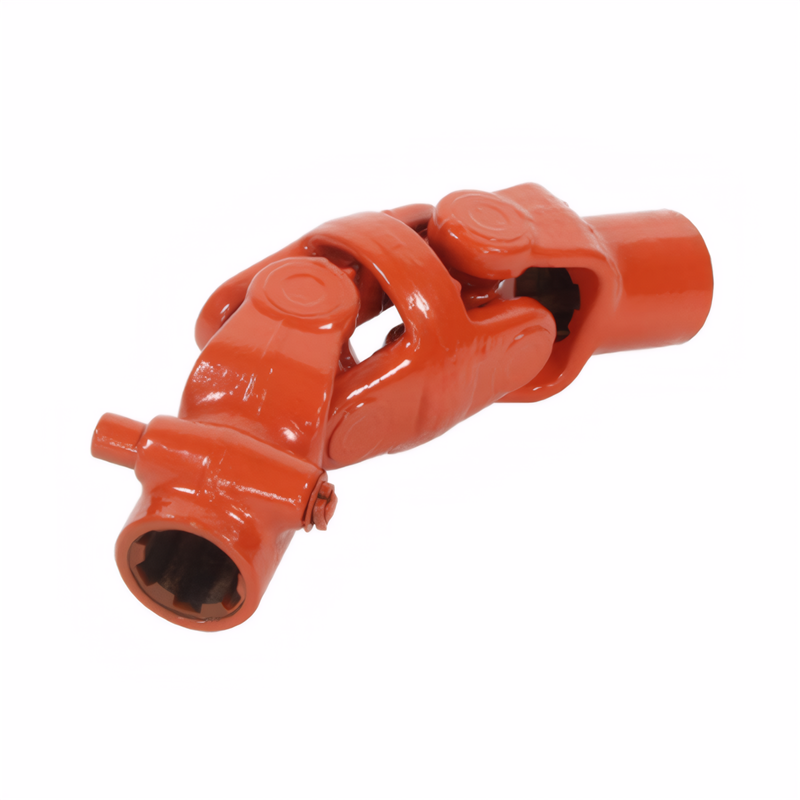Assembly requirements for the cross shaft of the drive shaft
Assembly Requirements for Drive Shaft Universal Joint Cross Axles
Precision Alignment of Cross Axle Components
The universal joint cross axle assembly demands strict angular alignment between its four trunnions and connecting yokes. During installation, the cross axle must remain perpendicular to both the input and output shaft axes to ensure equal velocity transmission. This requires precise alignment of the yoke forks, which should form a planar configuration with no more than 0.5° deviation. Manufacturers typically mark alignment reference points on the yoke flanges to facilitate correct positioning during reassembly.
Improper alignment causes non-uniform stress distribution, leading to premature bearing wear and vibration. Technical specifications mandate that the angular deviation between any two yoke planes should not exceed 1° under loaded conditions. This precision requirement necessitates the use of specialized fixtures during assembly to maintain component orientation within the specified tolerance range.
Tightness Control and Rotational Clearance
The cross axle assembly requires carefully controlled preload to balance rotational smoothness and structural integrity. Axial clearance between the cross axle and bearing races must remain within 0.02-0.25mm, with radial clearance not exceeding 0.4mm. These tolerances ensure proper lubricant film formation while preventing excessive play that could induce vibration.
Assembly technicians use torque wrenches to tighten the locking bolts to manufacturer-specified values, typically between 39.2-58.8 N·m for automotive applications. Over-tightening increases bearing friction and accelerates wear, while insufficient tightening risks component separation under dynamic loads. The final assembly must permit free rotation of the cross axle within the bearing housing without perceptible axial or radial movement.
Lubrication System Configuration
Proper lubrication represents a critical assembly requirement for universal joint cross axles. Each trunnion must contain a pre-filled grease reservoir, with the lubrication fitting positioned on the outward-facing side of the yoke assembly. This orientation ensures easy access for periodic maintenance while preventing lubricant contamination from external debris.
During assembly, technicians apply a high-temperature lithium-based grease to all rolling elements and bearing surfaces. The lubrication channels must align perfectly to enable continuous grease flow between the cross axle and bearing races. Some advanced designs incorporate grease-retaining grooves in the bearing housing to extend relubrication intervals. Incorrect grease application or blocked channels can lead to premature failure from metal-to-metal contact.
Component Compatibility and Inspection
The assembly process requires strict adherence to component compatibility guidelines. Cross axles and bearing races must come from the same production batch or undergo matching grinding to ensure uniform contact surfaces. The rolling elements—typically needle bearings or roller bearings—require classification by diameter with tolerances of ±0.005mm to prevent uneven load distribution.
Final inspection involves dimensional verification using precision gauges to confirm that all clearances fall within specified ranges. Technicians also perform rotational tests to detect any binding or irregular movement. Any assembly showing signs of improper fit or restricted rotation must be disassembled and reworked to meet quality standards before vehicle installation.
 The inspection method for the
The inspection method for the
 Symptoms of wear of the univer
Symptoms of wear of the univer
 Analysis of the Causes of Abno
Analysis of the Causes of Abno
 The ability of the drive shaft
The ability of the drive shaft
 简体中文
简体中文 English
English
